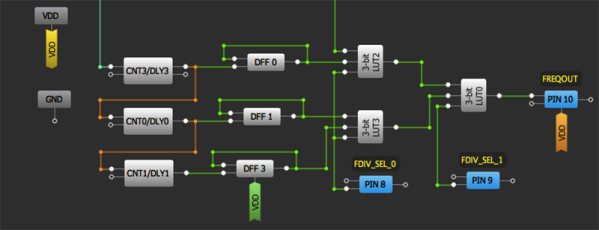Back in the bad old days, if you needed a little bit of custom logic you would whip out a tiny chip known as a PAL. A Programmable Logic Array is just what it sounds like and is the forerunner of modern, unsolderable CPLDs and FPGAs.
PALs and GALs have died off, left to the wastes of the Jameco warehouse, and now it seems the only programmable logic you can buy are huge, 100-pin monstrosities. [Nick] at Arachnid Labs was working on his Tsunami signal generator when a user asked if they could add just one more feature: a programmable divider to count 256 iterations of a clock. This is the perfect application for dumb logic, but if you’re looking for a part that’s not recommended for new designs, you only need to look to old programmable logic.
Enter the Greenpak. [Nick] had a dev kit for these ‘modern PALs’ sitting around and decided to give it a go. They’re small – they max out at 20 pins – but there are a few features that make it a little more interesting than a simple array of AND and OR gates. The Greenpak3 features analog comparators, look-up tables, RC oscillators, counters, and GPIO that will work well enough as circuit glue. They also work at 5V, something you’re just not going to find in more complex programmable logic.
These tiny chips are programmed in a graphical IDE, but the datasheet (PDF) includes full documentation for the bitstream; someone needs to write a Verilog or VHDL compiler for it soon. The one downside with these chips is that they’re tiny; 0.4mm pitch QFN packages. If you can solder that, you’re too good at soldering.











